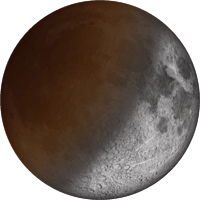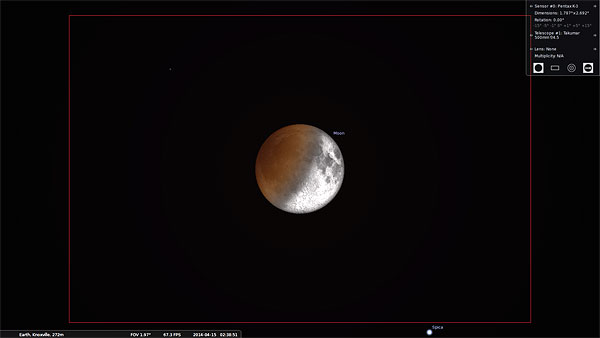Moon photo 101: Get prepared for tonight’s total lunar eclipse!
posted Monday, April 14, 2014 at 10:46 AM EST

Want to add a great lunar eclipse photo or two to your portfolio? Tonight's blood moon presents the best opportunity in the next few years in the Americas, at least if the weather plays ball and you're willing to forego some sleep. But shooting an eclipse isn't something we do every day, so it merits a little preparation. A blog post from photographer Ryan Zimmerman suggests a great way to get yourself ready, courtesy of an open-source application aimed at astronomers.
The eclipse will be visible from start to finish for the majority of the continental United States and Canada, as well as much of South America. The event officially starts shortly before 1:00am tonight, US Eastern time, but it won't be until around 1:39am that Earth's shadow will be noticeable. The main show comes much later, when the eclipse reaches totality at 3:06am. By 4:24am, the moon will have reappeared from the total eclipse, and the last trace of shadow will be gone by a little before 6:00am.
With almost an hour and a half of total eclipse, sandwiched on either side by about the same period of partial eclipse, you should have plenty of time to hone your technique during the event itself. We're big fans of the belt-and-suspender approach here at Imaging Resource, though, and that's where Zimmerman's blog post comes in. He suggests downloading Stellarium, a free and open-sourced app for Windows, Mac OS X, and Linux that has a neat trick. With a few details about your camera setup, it can give you an indication of how the night sky will be framed, letting you rehearse for the big event.
Admittedly, it's not the most straightforward app in the world. I downloaded it and gave it a spin for myself, and it took a little while to get to grips with -- but once I did, I got a nice indication of the reasonably close framing that should be available with an older Asahi Pentax 500mm f/4.5 Takumar lens that I recently picked up, appropriately adapted for use on the Pentax K-3 body I'm currently reviewing. (Or at least, the framing that would be possible, were I not forecast for a cloudy, rainy evening.)

Having tested Stellarium for myself, I've a few thoughts of my own to add to those in Zimmerman's article. The menus referenced in the article, for example, don't appear until you move your mouse pointer to the lower-left corner of the screen, causing them to appear in a column at screen left. Data on sensor size and pixel pitch can be obtained for many cameras from the folks at DxOMark. And if your city isn't in the list, you can easily get your own coordinates and altitude from Google Maps and Google Earth. (In Maps, right-click on a location and select "What's Here" to see your decimal coordinates under the search bar, then click on these and you'll see the latitude and longitude in degrees, minutes and second as used by Stellarium. Plug the same figures into Google Earth, and your altitude appears at the bottom right corner of the screen as the "elev" value.
Once I'd filled in the necessary data and selected my camera, lens and teleconverter pairing with the tiny arrow marks on the panel near the top right of the screen (it appears once the menu is closed), I was initially frustrated by the fact that the view changed to look downwards. That left me panning around trying to find the moon -- not an easy task with a 750mm-equivalent lens selected. After a while, though, I figured out that a click on the moon before selecting the camera and lens setup will avoid the frustration; the focus instead remains on the moon. And lastly, the Page Up and Page Down keys will zoom in and out, for a better preview of framing once camera gear is selected.
Once I got a handle on how it worked, though, this all struck me as a very handy way to get an idea for the framing I'd get with the various lenses and teleconverters available to me. And Zimmerman also provides a quick calculation that will get you in the ballpark on your shutter speed to ensure motion blur isn't an issue. (The moon, like everything in our night sky, moves surprisingly quickly when framed with a powerful telephoto lens.)
Of course, all of this doesn't really help me too much, thanks to the weather -- but at least I'll know what to do when the next eclipse rolls along. (There are three more total eclipses due in the next year and a half, after which we'll have to wait until 2018 for the next total eclipse) And hopefully you, dear reader, will have better luck than I. If you get a great shot of the eclipse, please do come back and share it in the comments below!